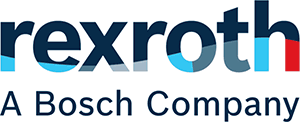

Products
OverviewIndustries
OverviewService
OverviewCompany
OverviewProduct groups
OvervieweConfigurators and Tools
Overview

Production companies in Europe face increasing cost pressure and a lack of specialist staff. Improvements in production as well as cost savings are therefore needed. The new PRC7000 welding control system is equipped with functions which help to increase OEE during resistance spot welding and offer significant potential for savings. “Adaptive Spatter Reduction” for example solves a central problem: It allows automated spatter reduction. One benefit of this is that the finishing work which would otherwise be required is no longer necessary.
Production companies from China, India and other Asian countries are offering their services for ever lower prices. For German companies, this means that production could quickly be moved to Asia if they are unable to optimize costs. It is therefore important to take the necessary steps in order to remain competitive.
One way to reduce costs is to outsource know-how. Many companies feel that they are forced to do this, for example because they are unable to find sufficient specialist staff. Although know-how is an important and valuable commodity for a company, it is increasingly being outsourced to a large extent for reasons of economy.
Increasing OEE (Overall Equipment Effectiveness) is another way to reduce costs. This key figure is a recognized measure of productivity in production. Data are collected in three key areas – availability, performance and quality. It is important to identify the factors which significantly influence the particular OEE value. The aim is to increase productivity, for example by reducing wastage. With its PRC7000 welding control system and its functions, Bosch Rexroth offers various ways of increasing OEE.
Early and precise fault signaling is a key part of the welding control system which has a positive influence on OEE. As a result, preventive steps can be taken quickly. However, the aim should be to address the causes rather than simply dealing with the symptoms. The PRC7000 therefore allows various parameters and configurations to be changed so that faults occur less frequently.
Examples: A punching machine punches metal sheets from untreated sheet metal. The punching tool eventually suffers wear. The metal sheets are not punched cleanly, resulting in a fissure when welding. The control system recognizes this unnatural fissure and signals a faulty “prior process”. Or a robot is taught to recognize a specific spot location. If it is not taught cleanly, the system recognizes this. As a result, the error is recognized and compensated for.
Extending the service life of spot welding electrodes is another way in which the new generation of welding control systems from Bosch Rexroth helps to increase OEE. The PRC7000 makes it possible to extend the service life of these electrodes. For example, more milling cycles are possible before the electrodes need to be replaced. New mechanical signals (7th axis) and the new adaptive alu/steel 2.0 regulating process also help to extend the service life of the electrodes and to optimize milling and welding.
Another of the PRC7000 welding control system’s special features is the integrated “Adaptive Spatter Reduction” function. In industrial production, ever shorter cycle times are required as a way of increasing productivity. This is particularly important in a number of areas including mass production. Increasingly complex welded joints such as hot-formed steels, shorter cycle times and thus new approaches such as short pulse welding are resulting in more and more spattering. As the welding speed increases, the amount of spattering increases dramatically. Spatters in production lead to a number of problems such as contamination, deposits and surface adhesion. Up until now, they have been virtually unavoidable and mean time-consuming finishing work, especially in the automotive sector.
Generally speaking, spatters on vehicle body parts must be ground off manually and can also stick to production machines. With “Adaptive Spatter Reduction”, this is done automatically. Because all adaptive measures take place within the set limits, no subsequent validation of the function or quality assurance is necessary. The current flowing is adjusted if necessary using an algorithm.
For users, automatic spatter reduction minimizes finishing work and the cleaning cycles for systems. This in turn helps to reduce costs. The system is integrated into the PRC7000 and can be used subject to licensing.
In addition to classic optimization methods, Bosch Rexroth is currently developing artificial intelligence (AI) functions as well. The new high-performance generation of welding control systems is able to carry out complex mathematical modeling. Because the model runs on the control system itself, decisions can be made during the process. This results in considerable savings.
With this and other functions offered by the PRC7000, companies can make improvements to the resistance spot welding process on various levels and thus made their production more economical.
